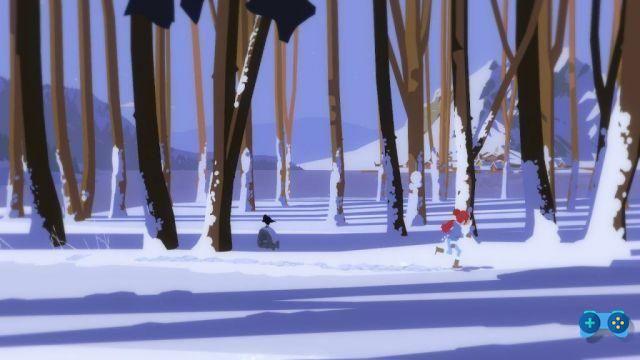

Further ahead there are also some shortcuts to move quickly between relatively distant locations, the beloved fast travel. While some places are too far to reach, it ends up bothering to see the same loading screen every time, but at least with each change of environment the game is automatically saved. Although the amount and time that each loading screen takes between one scenario and another may not please – around 5 seconds. It’s a very clever workaround, which takes away the frustration of the old need to manually search for everything that could be a potential point of interest.Īs it could not be missed, backtracking is very present, and this isn’t necessarily a problem. What helps most novice players and avoids the interaction button spam to test whether anything can be activated in the scenario or not, and there’s a command that causes interactable objects to blink when clicking the left analog stick. Tove can interact with objects in the scene and people by pressing the A button, as well as being able to open her backpack with X and mix objects to create some new ones, use items in key locations in the scene to solve puzzles, among other elements already seen before.ĭespite being a gameplay already quite used, here everything works very well and the reward for each successive act is precisely the sense of accomplishment that Roki provides the player all the time. The gameplay works very well and follows the familiar patterns of the classics of the genre. There aren’t many cutscenes in Roki, which is probably why immersion is greatly increased by feeling control of Tove’s actions in her hands. With no way to change the situation, Tove desperately takes the sled out of the cellar and goes far from the place with Lars.Īll of these parts of the story are given to the player interactively, so that everything is felt through the gameplay itself. The children then flee from danger, but their Papa was left behind after being buried by debris and wooden beams that were on fire. Everything was going well, until one night when everyone went to sleep, and suddenly a dark creature appears in the family home and leaves everything in pieces.

The girl takes care of little Lars and even housework, also taking the work of making dinner. The kids lost their mother some years ago, but Tove still feels the pain of the loss and constantly shows compassion to his father preventing him from feeling lonely.

In Roki you take control of Tove, a preteen little girl who lives in an isolated place in the middle of the forest with her brother Lars and her Papa. However the plot is an important piece in adventure games, and certainly the story of Tove and Lars will captivate from the first minutes of contact. With Roki we aren’t capable of seeing so much news, but the modern formula chosen for this game is precisely the abandonment of point ‘n’ click gameplay, giving to the player the protagonist’s complete movement control. But truth be told, innovating within the adventure genre is not such an easy task, since the biggest differences between one game and another are story related, as the gameplay usually revolves around puzzle solving and backtracking. Over time, the formula became saturated, especially with games from the hated Telltale Games that looked more like a re-skin of their other titles. I have always been a passionate fan of this sort of gameplay, the well known point ‘n’ click one, which you point out a direction for the character to walk and click for an interaction to occur – both with objects and non-playable characters. I can remember that, in the past, the biggest titles of the genre were under the umbrella of the late LucasArts, and we had great classics like The Dig and the incredible Monkey Island. Developed by Polygon Treehouse, Roki is part of a new wave of adventure games with a modernized approach.


 0 kommentar(er)
0 kommentar(er)
